Probabilidad
Sucesos y operaciones con sucesos
$$\left\{\begin{array}{c}
\mathbf{\hbox{(Suceso seguro) }} X \\
\\
\mathbf{\hbox{(Suceso imposible) }} \varnothing \\
\\
\mathbf{\hbox{ (Intersección de sucesos) }} A \cap B = \begin{Bmatrix}
x / x \in A \wedge x \in B
\end{Bmatrix}\\
\\
\mathbf{\hbox{ (Unión de sucesos) }} A \cup B = \begin{Bmatrix}
x / x \in A \vee x \in B
\end{Bmatrix}\\
\\
\mathbf{\hbox{ (Diferencia de sucesos) }} A - B = \begin{Bmatrix}
x / x \in A \wedge x \notin B
\end{Bmatrix} = A \cap \overline{B}\\
\\
\mathbf{\hbox{ (Contrario o complementario de un suceso) }} \left\{\begin{array}{l}
\overline{A} = \begin{Bmatrix}
x / x \notin A
\end{Bmatrix}\\
\\
\left.\begin{array}{l}
\overline{A} = X - A\\
\overline{\overline{A}} = A\\
X = A \cup \overline{A}\\
A = (A \cap B) \cup (A \cap \overline{B})\\
\end{array}\right.\\
\end{array}\right.\\
\\
\mathbf{\hbox{(Leyes de Morgan)}} \left\{\begin{array}{l}
\overline{A \cup B} = \overline{A} \cap \overline{B}\\
\overline{A \cap B} = \overline{A} \cup \overline{B}\\
\end{array}\right.\\
\\
\mathbf{\hbox{ (Incompatibilidad de sucesos) }} \hbox{A y B son incompatibles} \Leftrightarrow A \cap B = \varnothing\\
\end{array}\right.
$$
Cálculo de Probabilidades
$$\left\{\begin{array}{c}
\left.\begin{array}{c}
P(\varnothing)=0, P(X)=1 \\
\\
\varnothing \subseteq A \subseteq X \Rightarrow 0 \leq P(A) \leq 1\\
\end{array}
\right.\\
\\
\mathbf{\hbox{ (Probabilidad de la unión) }} \left\{\begin{array}{l}
P(A \cup B) = P(A) + P(B) - P(A \cap B) \\
\\
\hbox{Si A y B incompatibles} \Rightarrow P(A \cup B) = P(A) + P(B) \\
\end{array}\right.\\
\\
\left.\begin{array}{c}
\hbox{En general, dados n sucesos } A_1, A_2, \cdots , A_n: \\
\\
P(A_1 \cup \cdots \cup A_n) = \displaystyle{\sum_{i=1}^{n}P(A_i)} - \displaystyle{\sum_{i \neq j}^{}P(A_i \cap A_j)} + \displaystyle{\sum_{i \neq j \neq k}^{}P(A_i \cap A_j \cap A_k)} - \cdots +(-1)^n P(A_1 \cap \cdots \cap A_n)\\
\\
\hbox{Si } \forall i \neq j, A_i \hbox{ y } A_j \hbox{ son incompatibles} \Rightarrow P(A_1 \cup \cdots \cup A_n) = \displaystyle{\sum_{k=1}^{n}P(A_k)}\\
\end{array}\right.\\
\\
\mathbf{\hbox{ (Probabilidad de la contrario) }} P(\overline{A})=1-P(A) \\
\\
\mathbf{\hbox{(Regla de Laplace) }} P(A)=\frac{\hbox{Casos favorables a A}}{\hbox{Casos posibles}} \hbox{ , si todos los sucesos elementales son equiprobables}\\
\end{array}\right.$$
Experiencias compuestas
$$\left\{\begin{array}{l}
\mathbf{\hbox{(Probabilidad condicionada) }} P(A|B)=\displaystyle{\frac{P(A \cap B)}{P(B)}} \hbox{ , es la probabilidad de que ocurra A sabiendo que ha ocurrido B}\\
\\
\mathbf{\hbox{(Intersección de sucesos) }}
\left\{\begin{array}{l}
P(A \cap B)=P(A) \cdot P(B|A)\\
\\
P(A \cap B \cap C)=P(A) \cdot P(B|A) \cdot P(C|A \cap B)\\
\\
P(A_1 \cap \cdots \cap A_n)=P(A_1) \cdot P(A_2|A_1) \cdots P(A_n|A_1 \cap \cdots \cap A_{n-1})\\
\end{array}\right.\\
\\
\mathbf{\hbox{(Independencia de sucesos) }} \hbox{A y B independientes} \Leftrightarrow P(A \cap B)=P(A) \cdot P(B) \Leftrightarrow P(A|B)=P(A) \hbox{ si P(B)} \neq 0\\
\end{array}\right.$$
Sistema completo de sucesos
Un sistema completo de sucesos \(S_{1}, S_{2}, \cdots, S_{n}\) es un conjunto de sucesos cuya unión es el total, es decir, es el espacio muestral \(X\), e incompatibles dos a dos, es decir, la intersección de cualesquiera dos de ellos es el conjunto vacío.
$$
\left\{\begin{array}{l}
S_1 \cup \cdots \cup S_n = X\\
S_i \cap S_j=\varnothing \hbox{ } \forall i,j
\end{array}\right.$$
Ejemplo:
Dado un suceso \(A\), en todo sistema completo de sucesos se cumple:
$$\left\{\begin{array}{l}
\mathbf{\hbox{ (Teorema de la Probabilidad Total) }} P(A)=\displaystyle{\sum_{k=1}^{n}P(S_k)\cdot P(A|S_k)} \\
\\
\mathbf{\hbox{ (Teorema de Bayes) }} P(S_i|A)=\displaystyle{\frac{P(S_i) \cdot P(A|S_i)}{\displaystyle{\sum_{k=1}^{n}P(S_k)\cdot P(A|S_k)}}} \\
\end{array}\right.$$
Ejemplo:
Teorema de la Probabilidad Total:
$$\left\{\begin{array}{l}
P(A)=P(S_1) \cdot P(A|S_1)+P(S_2) \cdot P(A|S_2)+P(S_3) \cdot P(A|S_3)+P(S_4) \cdot P(A|S_4)\\
\\
P(\overline{A})=P(S_1) \cdot P(\overline{A}|S_1)+P(S_2) \cdot P(\overline{A}|S_2)+P(S_3) \cdot P(\overline{A}|S_3)+P(S_4) \cdot P(\overline{A}|S_4)\\
\end{array}\right.$$
Teorema de Bayes:
$$\left\{\begin{array}{l}
P(S_1|A)=\displaystyle{\frac{P(S_1) \cdot P(A|S_1)}{P(S_1) \cdot P(A|S_1)+P(S_2) \cdot P(A|S_2)+P(S_3) \cdot P(A|S_3)+P(S_4) \cdot P(A|S_4)}}\\
\\
P(S_1|\overline{A})=\displaystyle{\frac{P(S_1) \cdot P(\overline{A}|S_1)}{P(S_1) \cdot P(\overline{A}|S_1)+P(S_2) \cdot P(\overline{A}|S_2)+P(S_3) \cdot P(\overline{A}|S_3)+P(S_4) \cdot P(\overline{A}|S_4)}}\\
\\
P(S_2|A)=\displaystyle{\frac{P(S_2) \cdot P(A|S_2)}{P(S_1) \cdot P(A|S_1)+P(S_2) \cdot P(A|S_2)+P(S_3) \cdot P(A|S_3)+P(S_4) \cdot P(A|S_4)}}\\
\\
P(S_2|\overline{A})=\displaystyle{\frac{P(S_2) \cdot P(\overline{A}|S_2)}{P(S_1) \cdot P(\overline{A}|S_1)+P(S_2) \cdot P(\overline{A}|S_2)+P(S_3) \cdot P(\overline{A}|S_3)+P(S_4) \cdot P(\overline{A}|S_4)}}\\
\\
P(S_3|A)=\displaystyle{\frac{P(S_3) \cdot P(A|S_3)}{P(S_1) \cdot P(A|S_1)+P(S_2) \cdot P(A|S_2)+P(S_3) \cdot P(A|S_3)+P(S_4) \cdot P(A|S_4)}}\\
\\
P(S_3|\overline{A})=\displaystyle{\frac{P(S_3) \cdot P(\overline{A}|S_3)}{P(S_1) \cdot P(\overline{A}|S_1)+P(S_2) \cdot P(\overline{A}|S_2)+P(S_3) \cdot P(\overline{A}|S_3)+P(S_4) \cdot P(\overline{A}|S_4)}}\\
\\
P(S_4|A)=\displaystyle{\frac{P(S_4) \cdot P(A|S_4)}{P(S_1) \cdot P(A|S_1)+P(S_2) \cdot P(A|S_2)+P(S_3) \cdot P(A|S_3)+P(S_4) \cdot P(A|S_4)}}\\
\\
P(S_4|\overline{A})=\displaystyle{\frac{P(S_4) \cdot P(\overline{A}|S_4)}{P(S_1) \cdot P(\overline{A}|S_1)+P(S_2) \cdot P(\overline{A}|S_2)+P(S_3) \cdot P(\overline{A}|S_3)+P(S_4) \cdot P(\overline{A}|S_4)}}\\
\\
\end{array}\right.$$
Diagramas de árbol
Ejemplos:
Tablas de contingencia
Ejemplo:
Diagramas de Venn
Dados dos conjuntos A y B:
 |
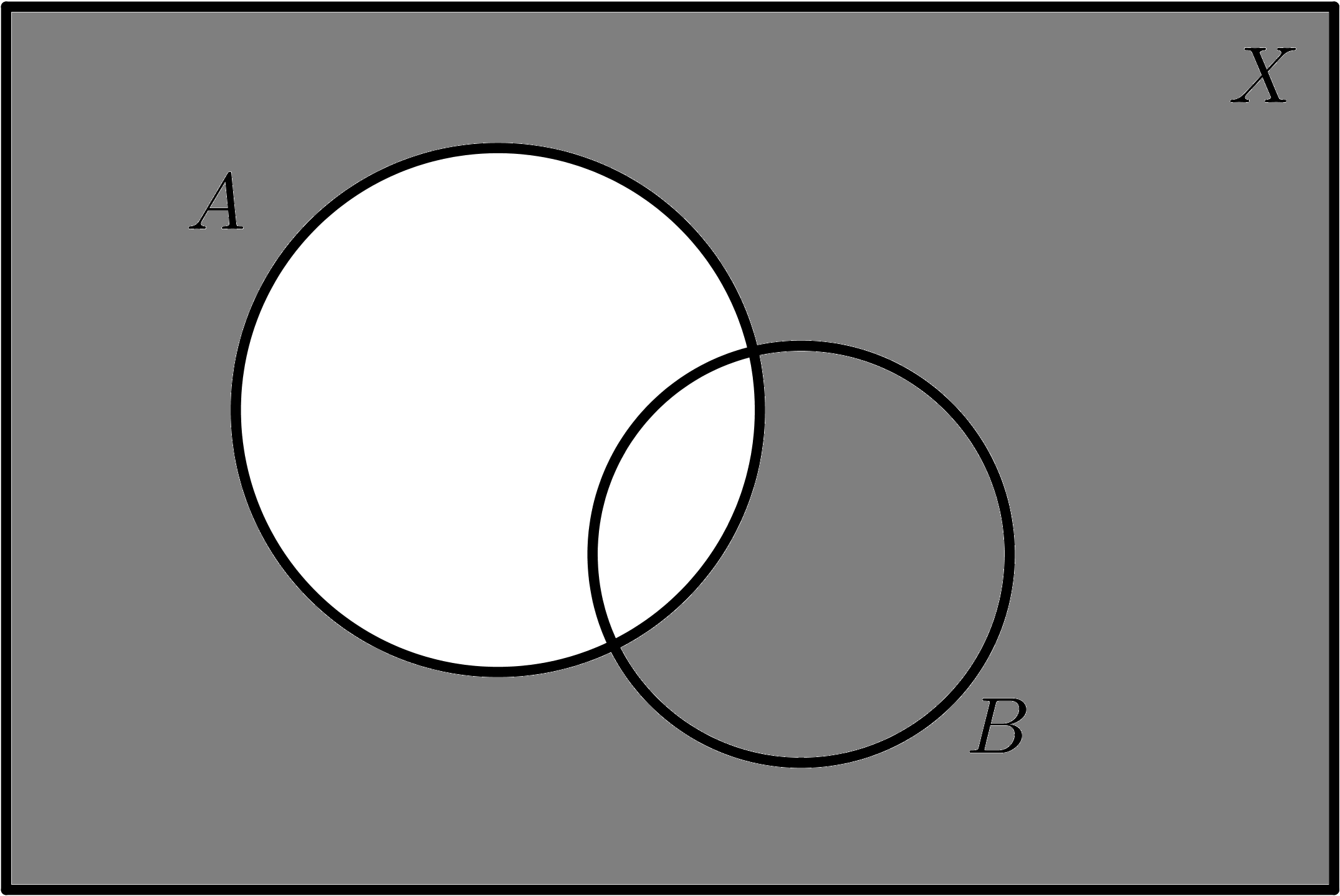 |
 |
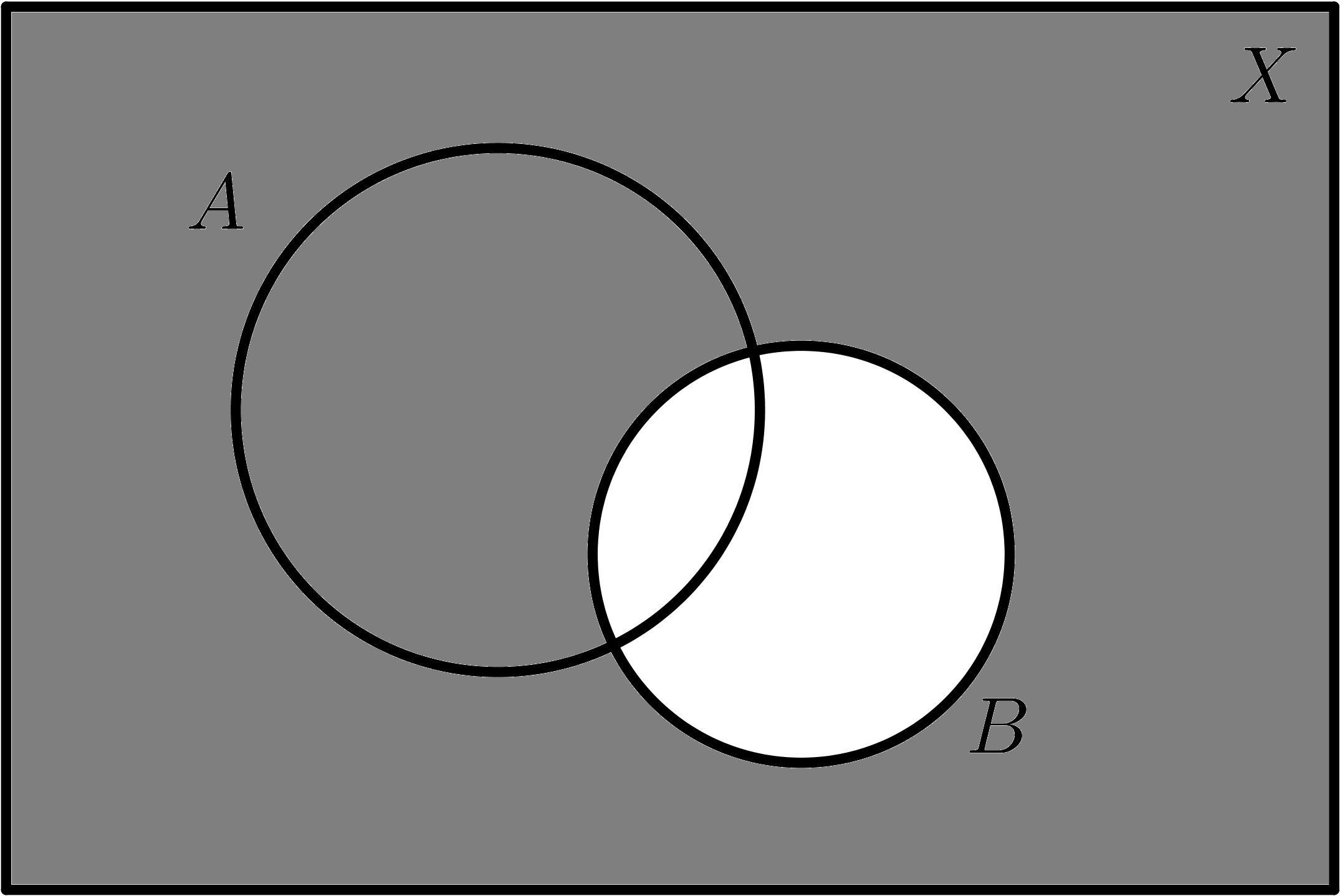 |
| $$A$$ |
$$\overline{A}$$ |
$$B$$ |
$$\overline{B}$$ |
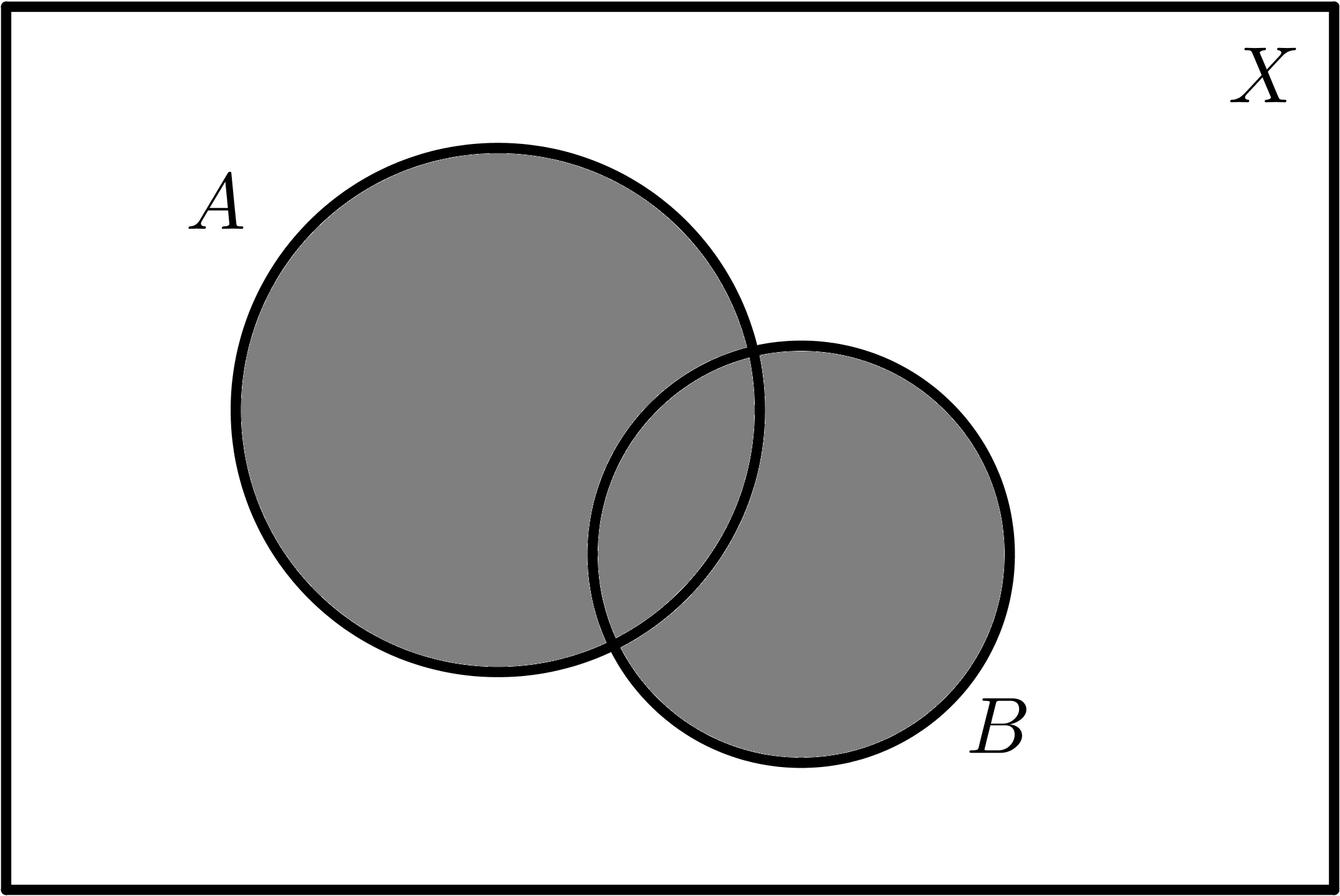 |
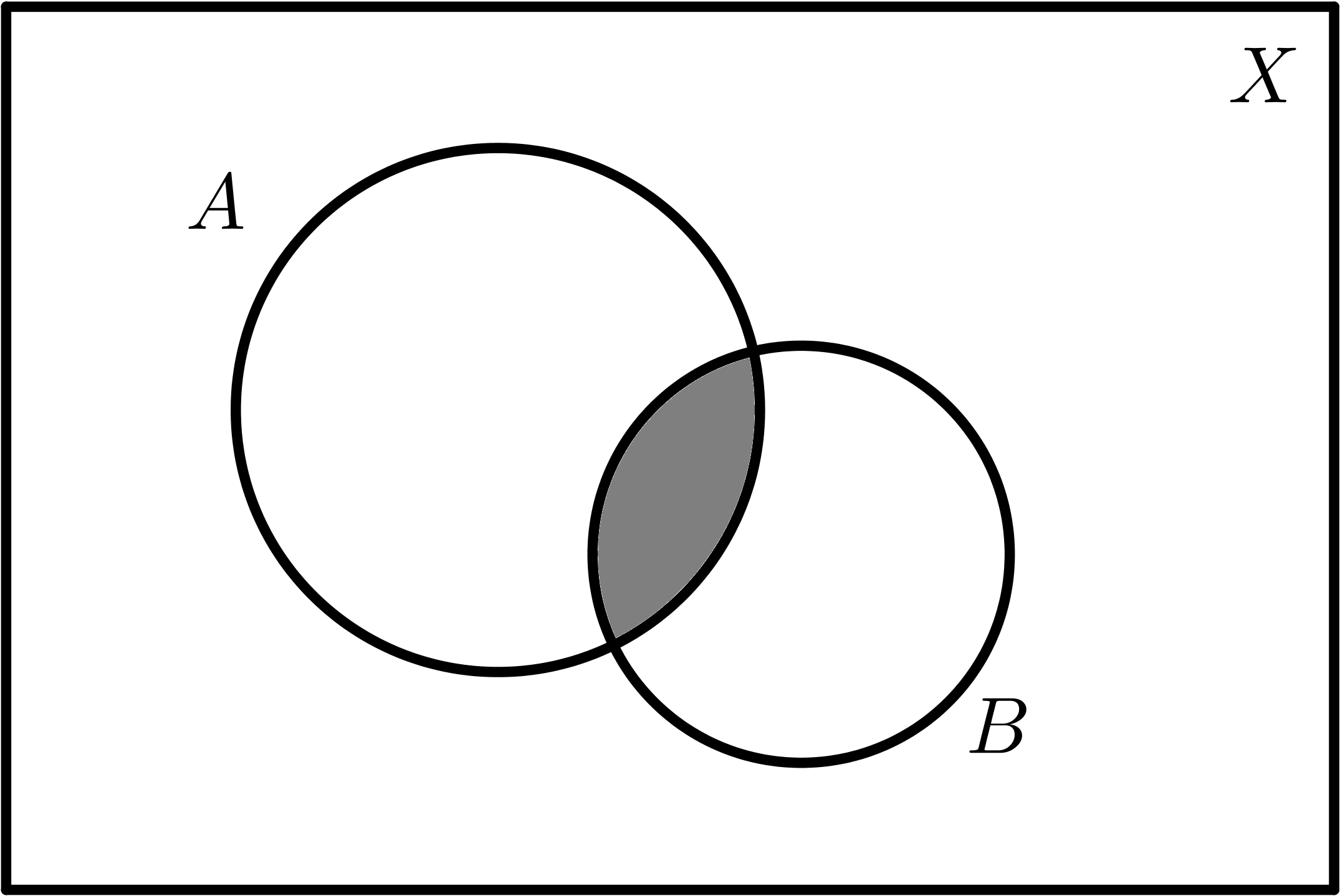 |
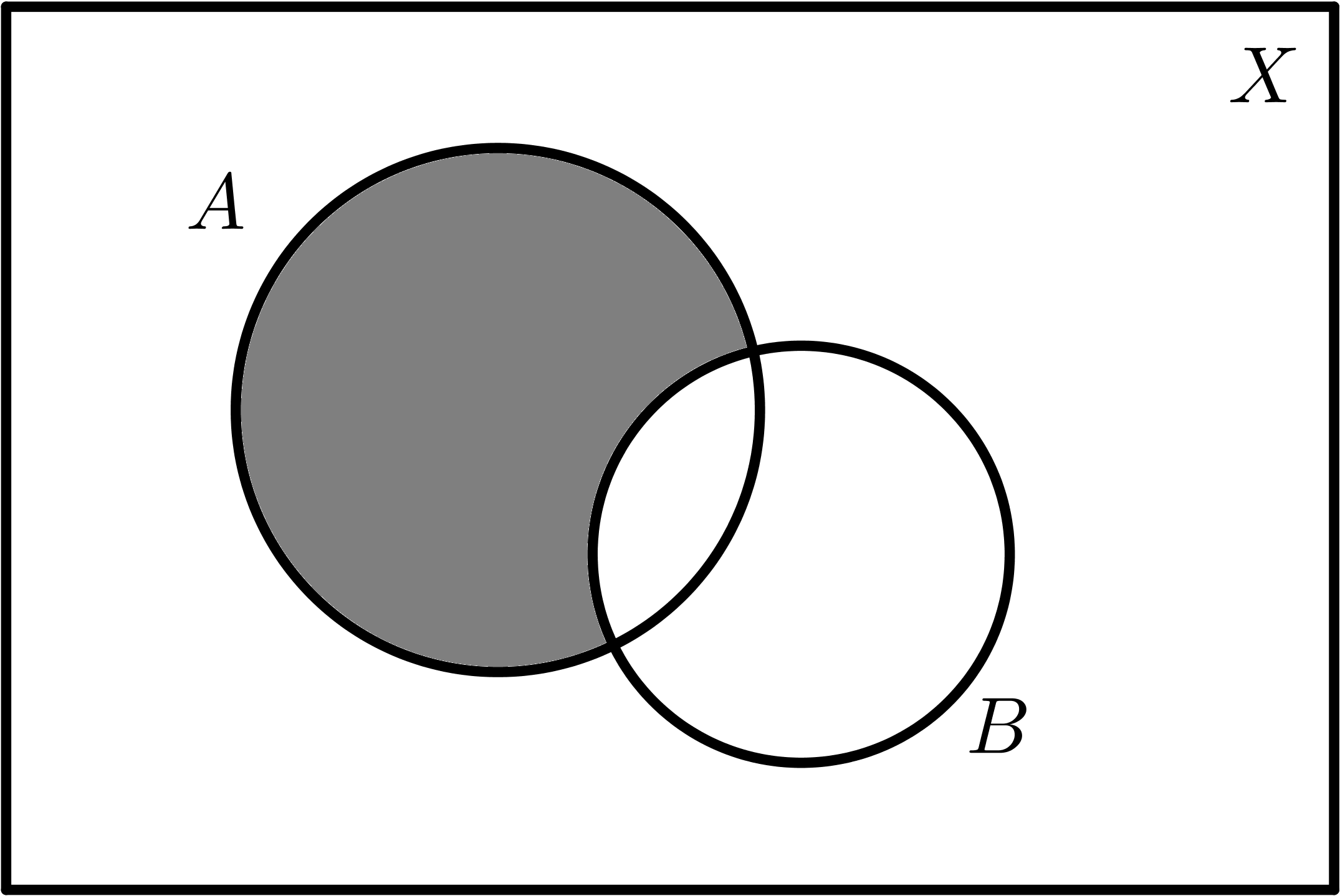 |
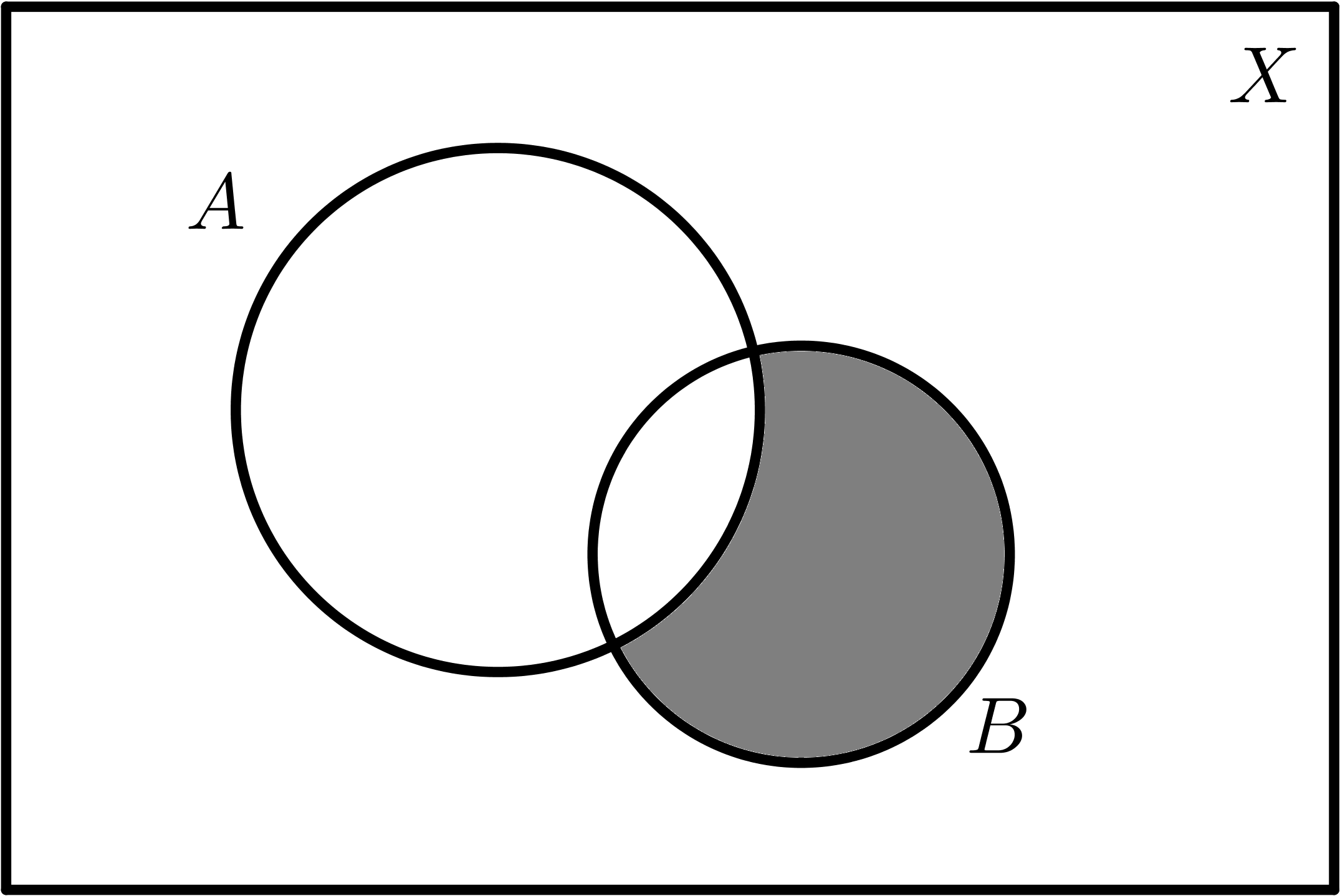 |
| $$A \cup B$$ |
$$A \cap B$$ |
$$A - B$$ |
$$B - A$$ |
Dados tres conjuntos A, B y C:
 |
 |
 |
 |
| $$A$$ |
$$\overline{A}$$ |
$$B$$ |
$$\overline{B}$$ |
 |
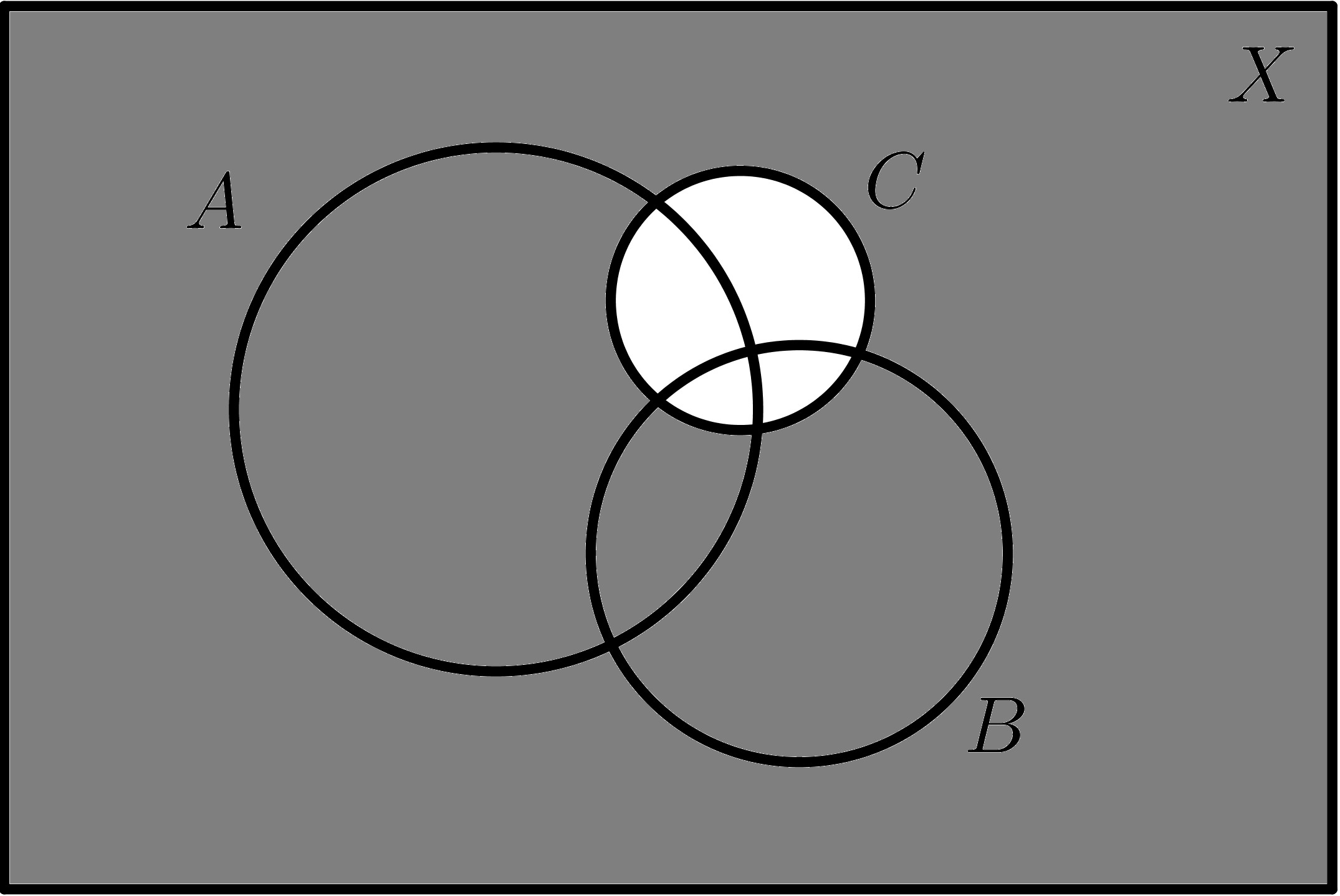 |
 |
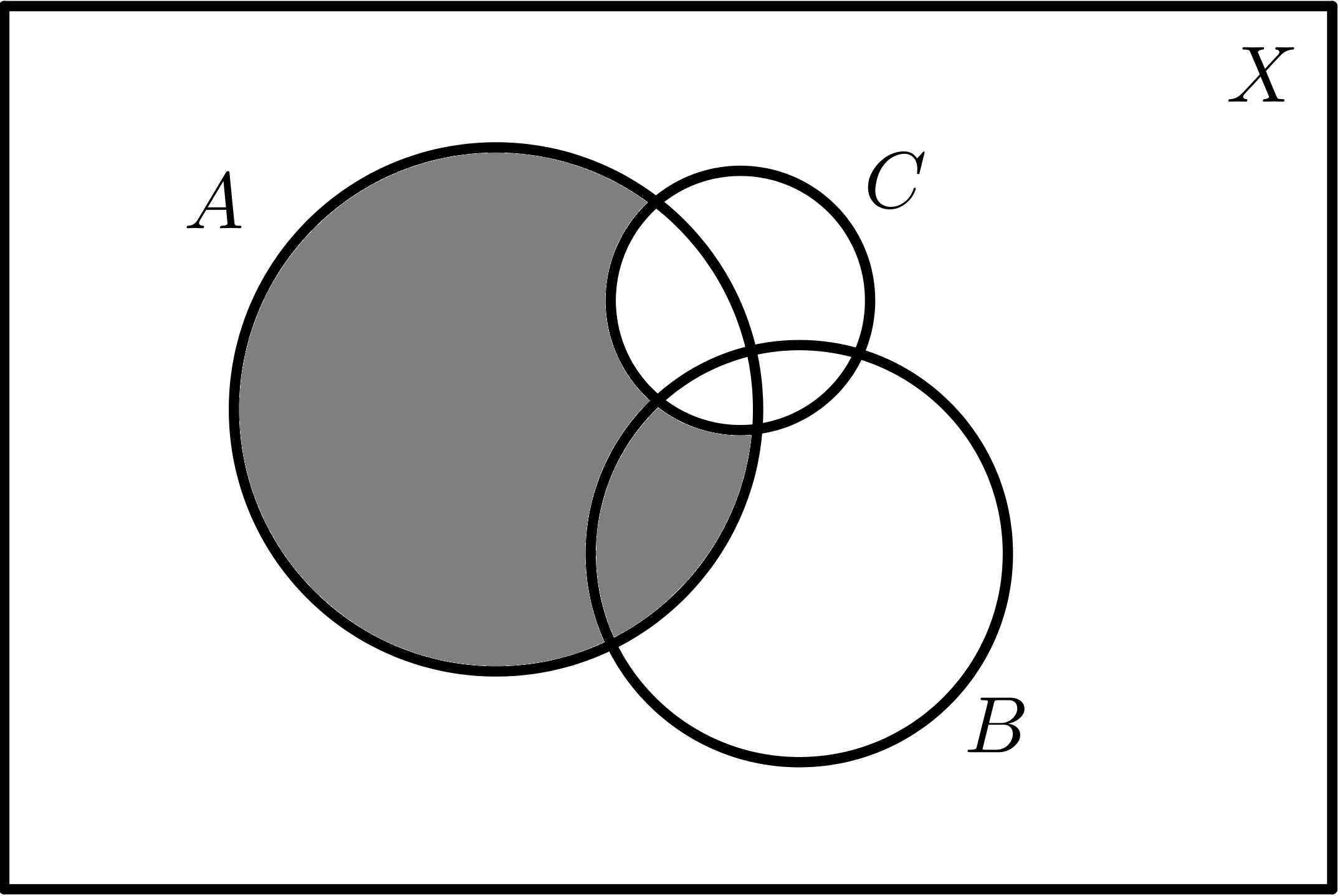 |
| $$C$$ |
$$\overline{C}$$ |
$$A - B$$ |
$$A - C$$ |
 |
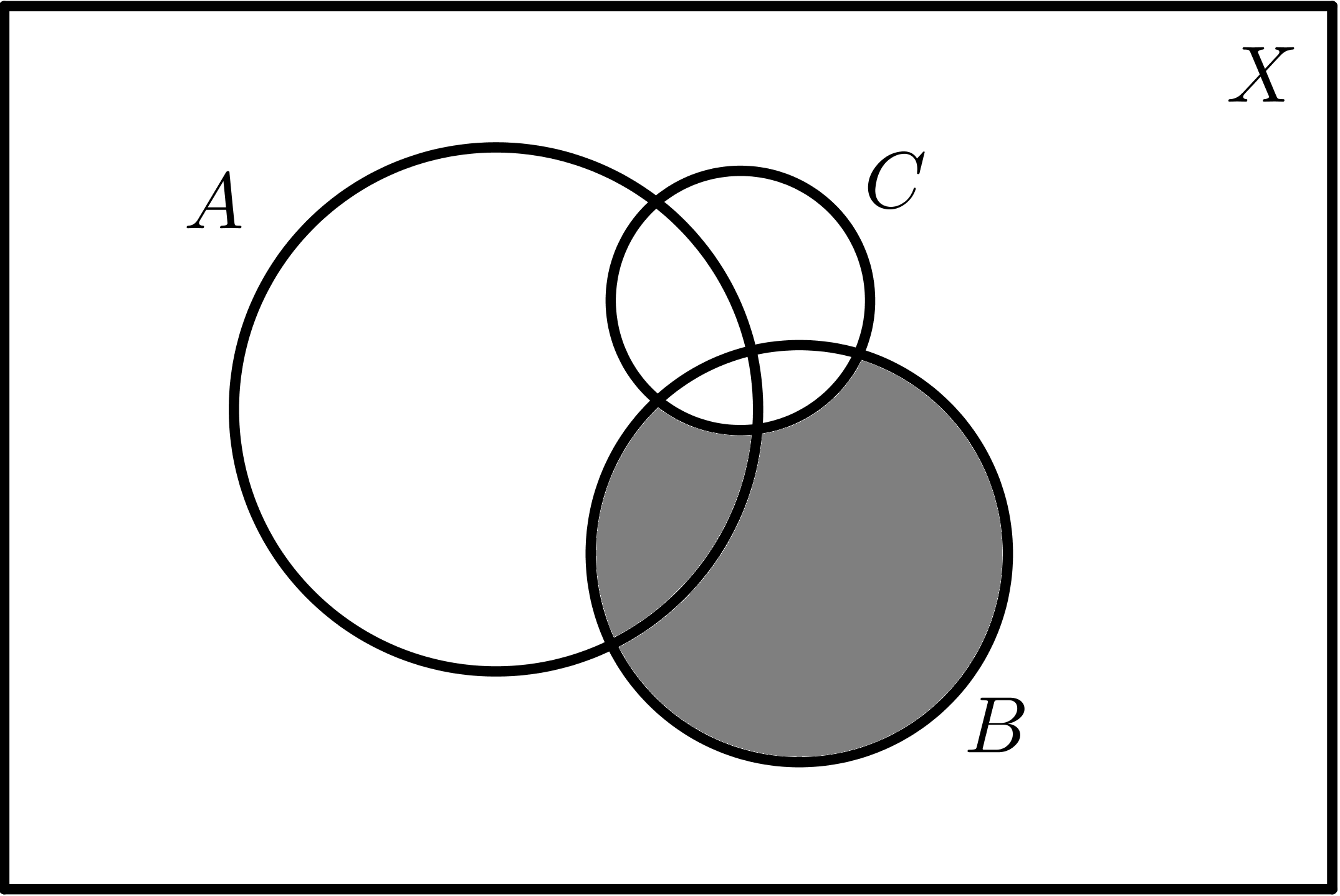 |
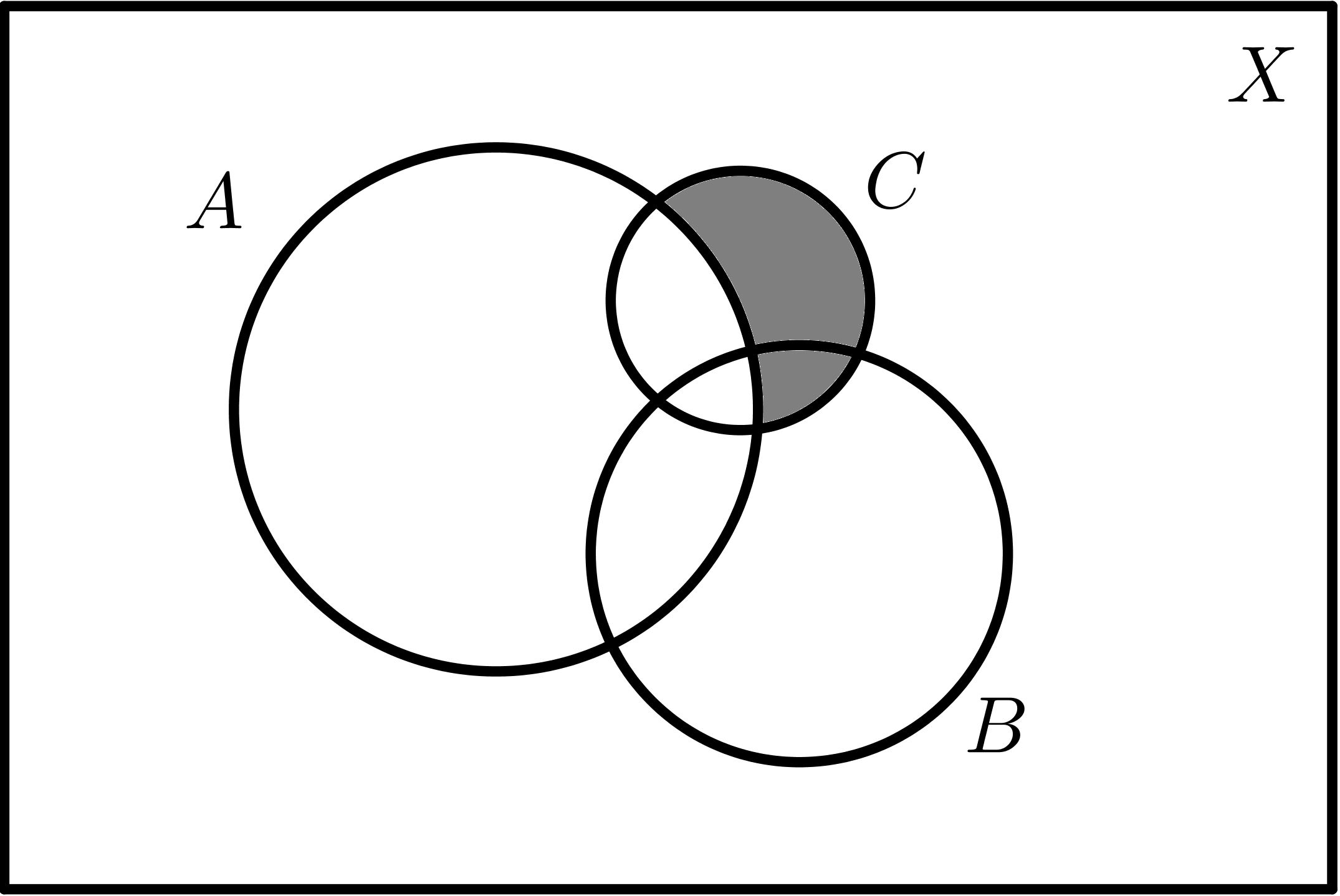 |
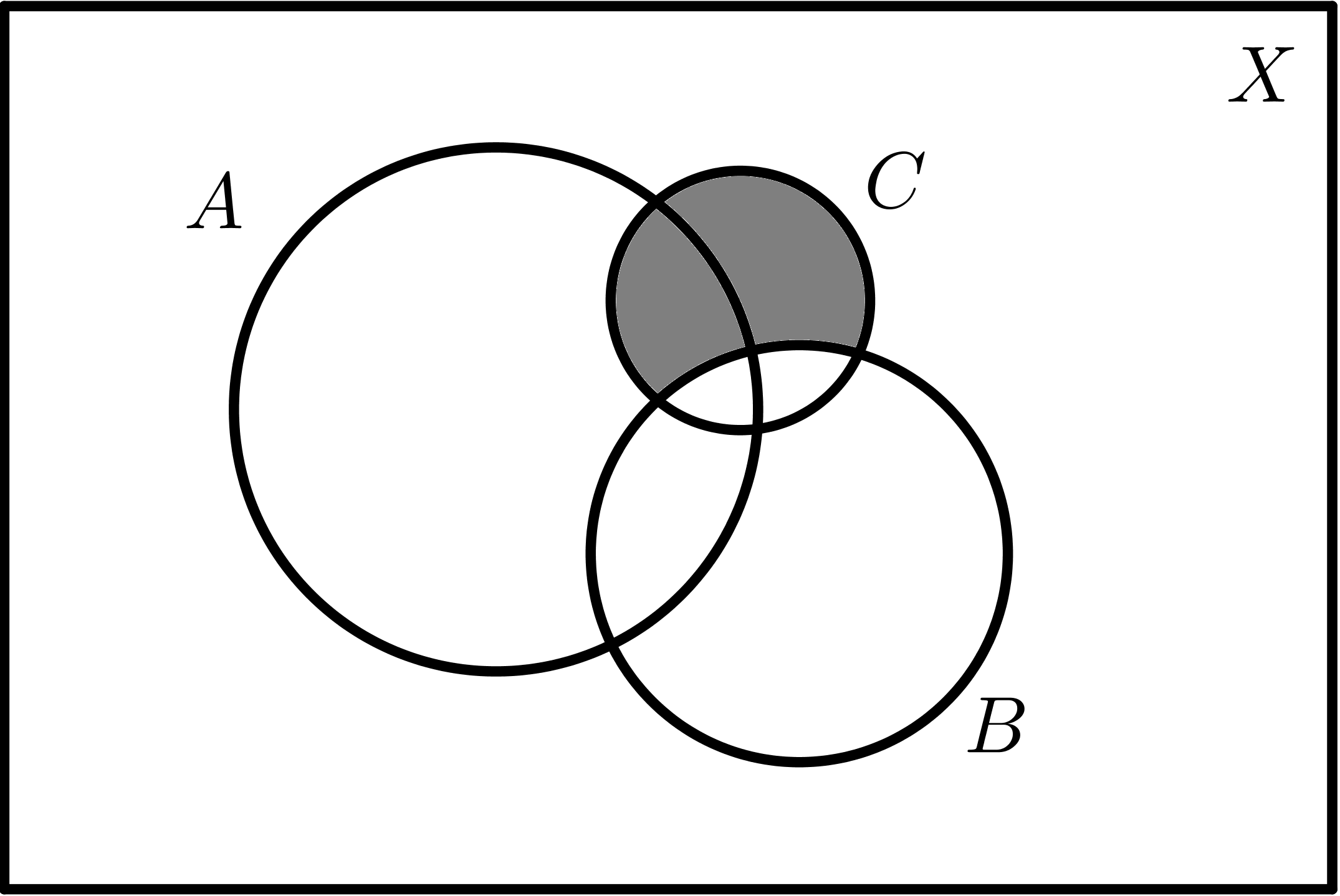 |
| $$B - A$$ |
$$B - C$$ |
$$C - A$$ |
$$C - B$$ |
 |
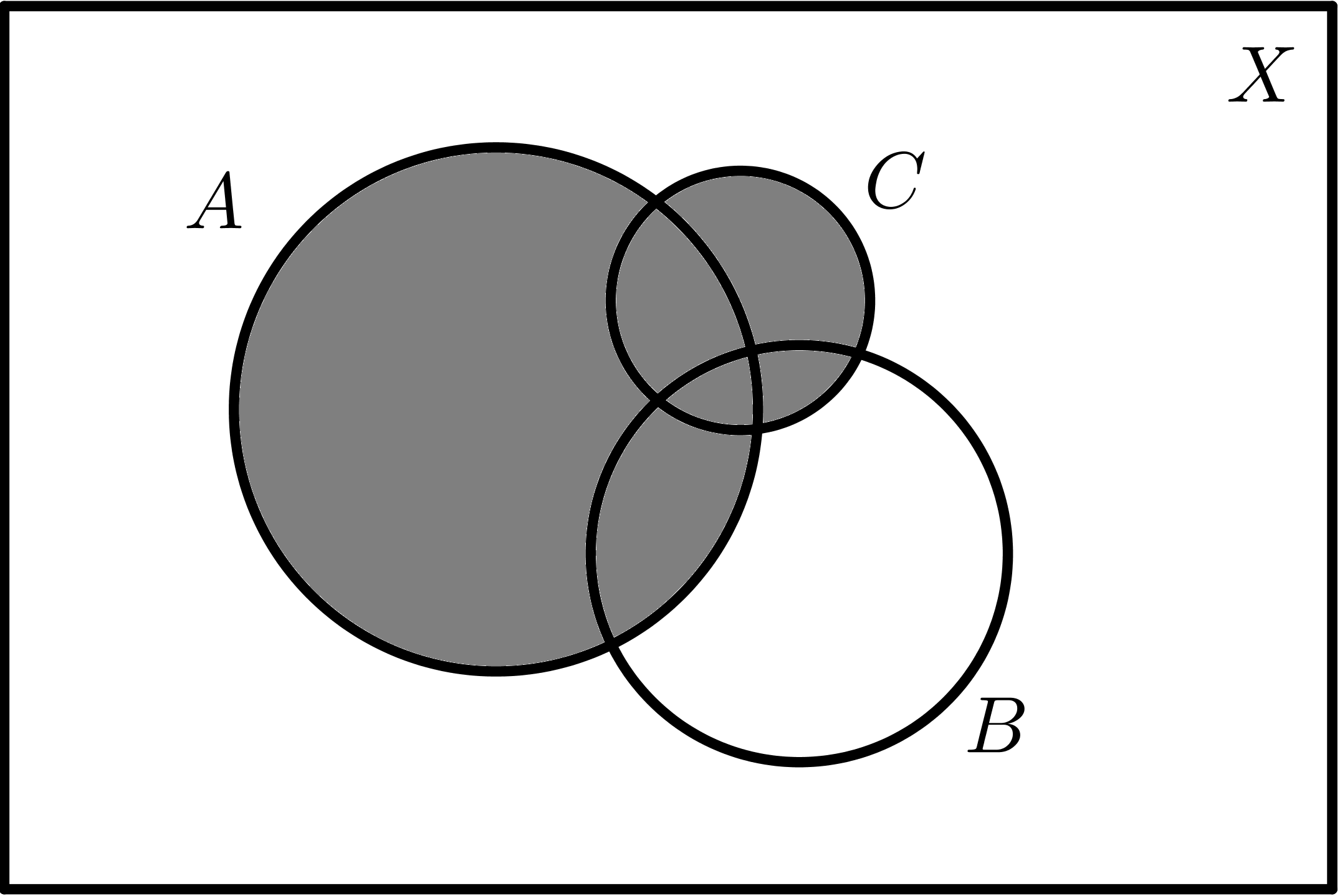 |
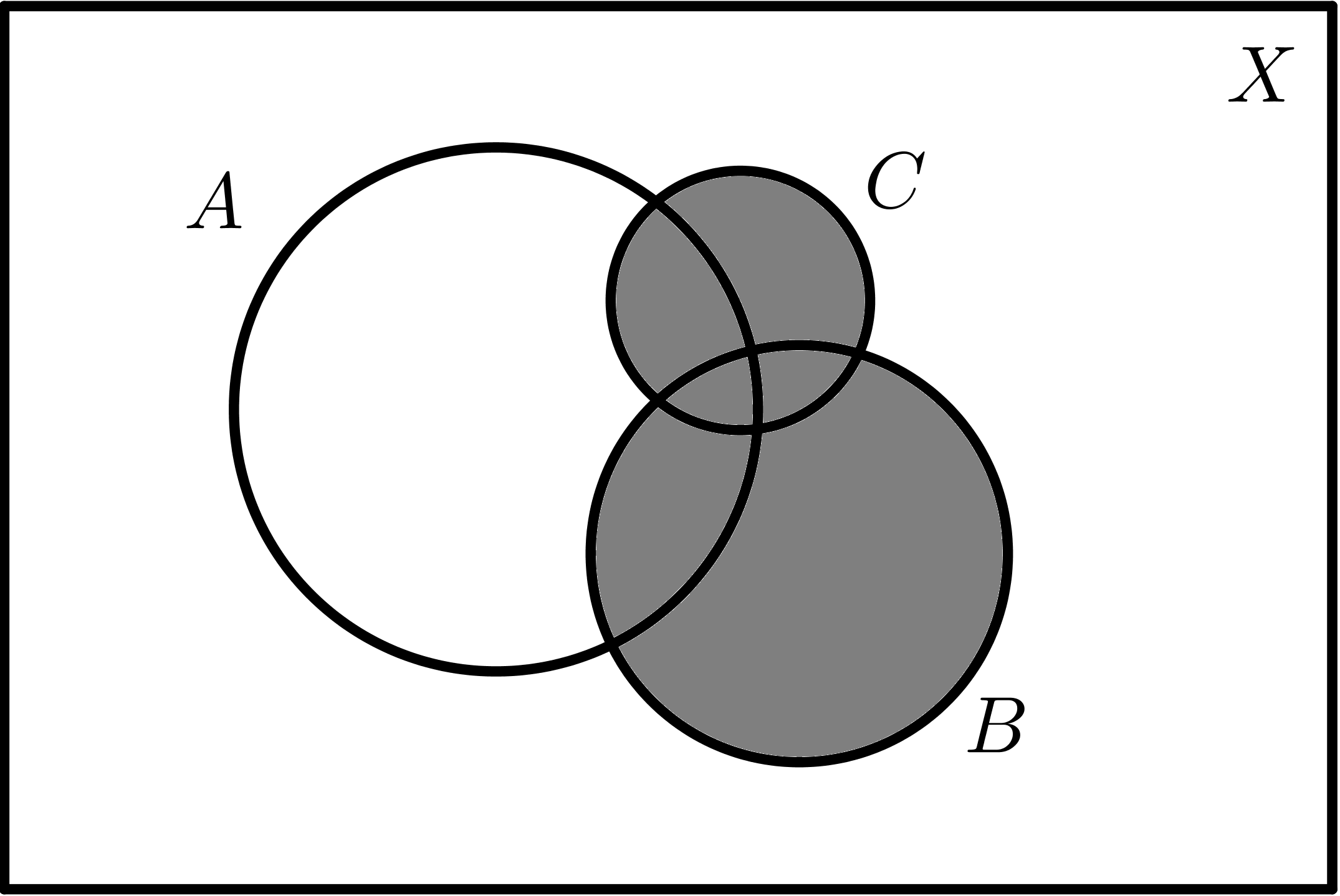 |
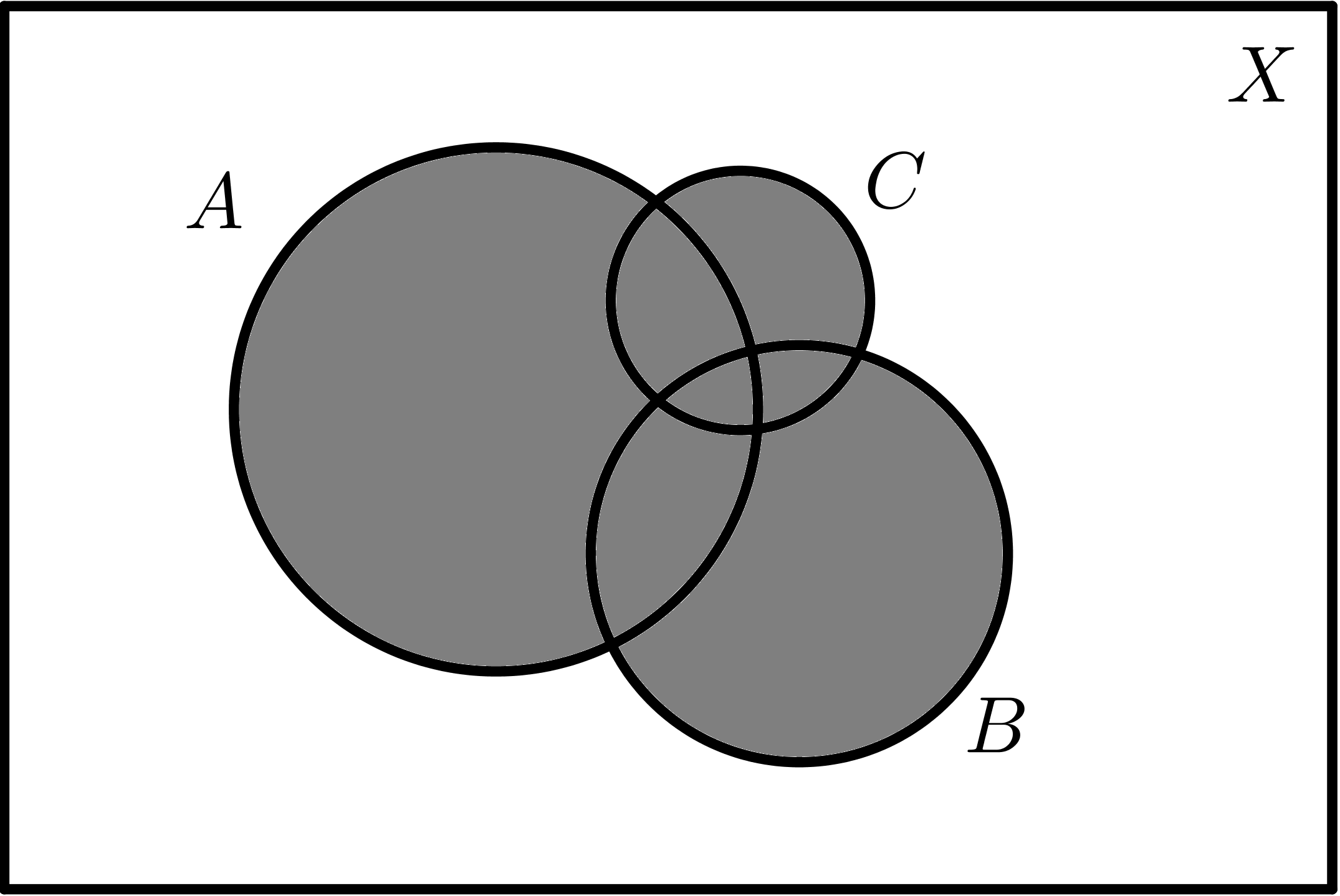 |
| $$A \cup B$$ |
$$A \cup C$$ |
$$B \cup C$$ |
$$A \cup B \cup C$$ |
 |
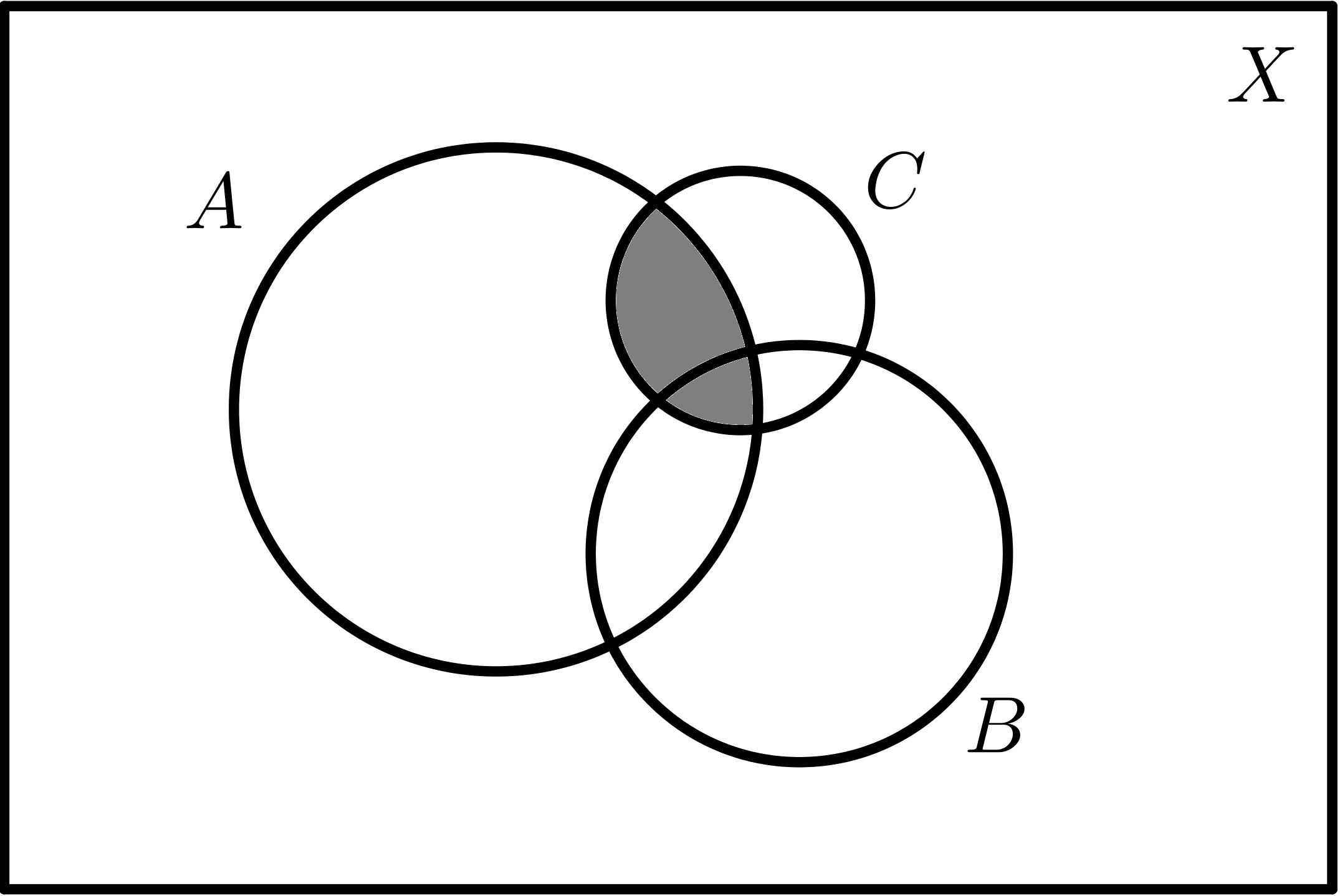 |
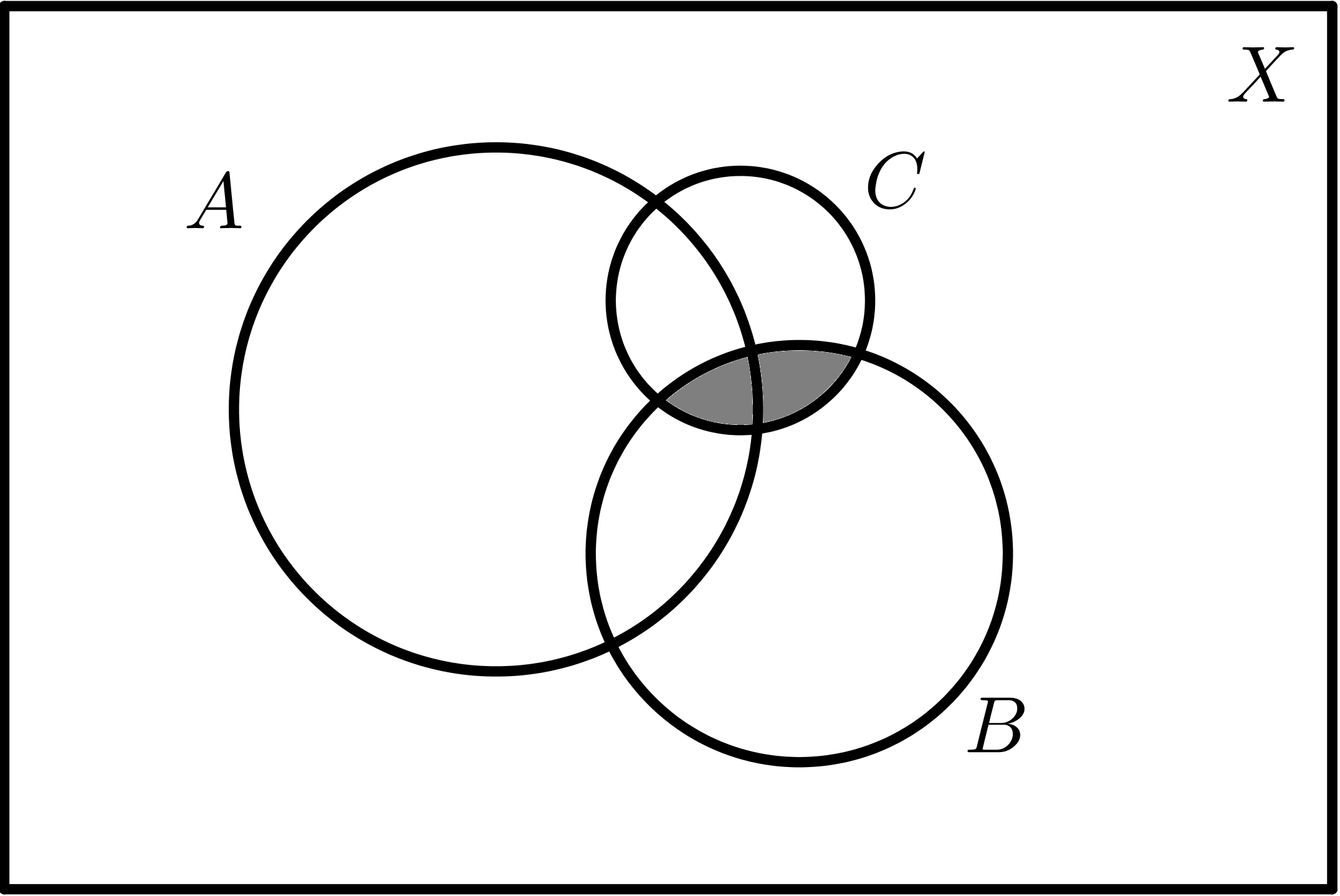 |
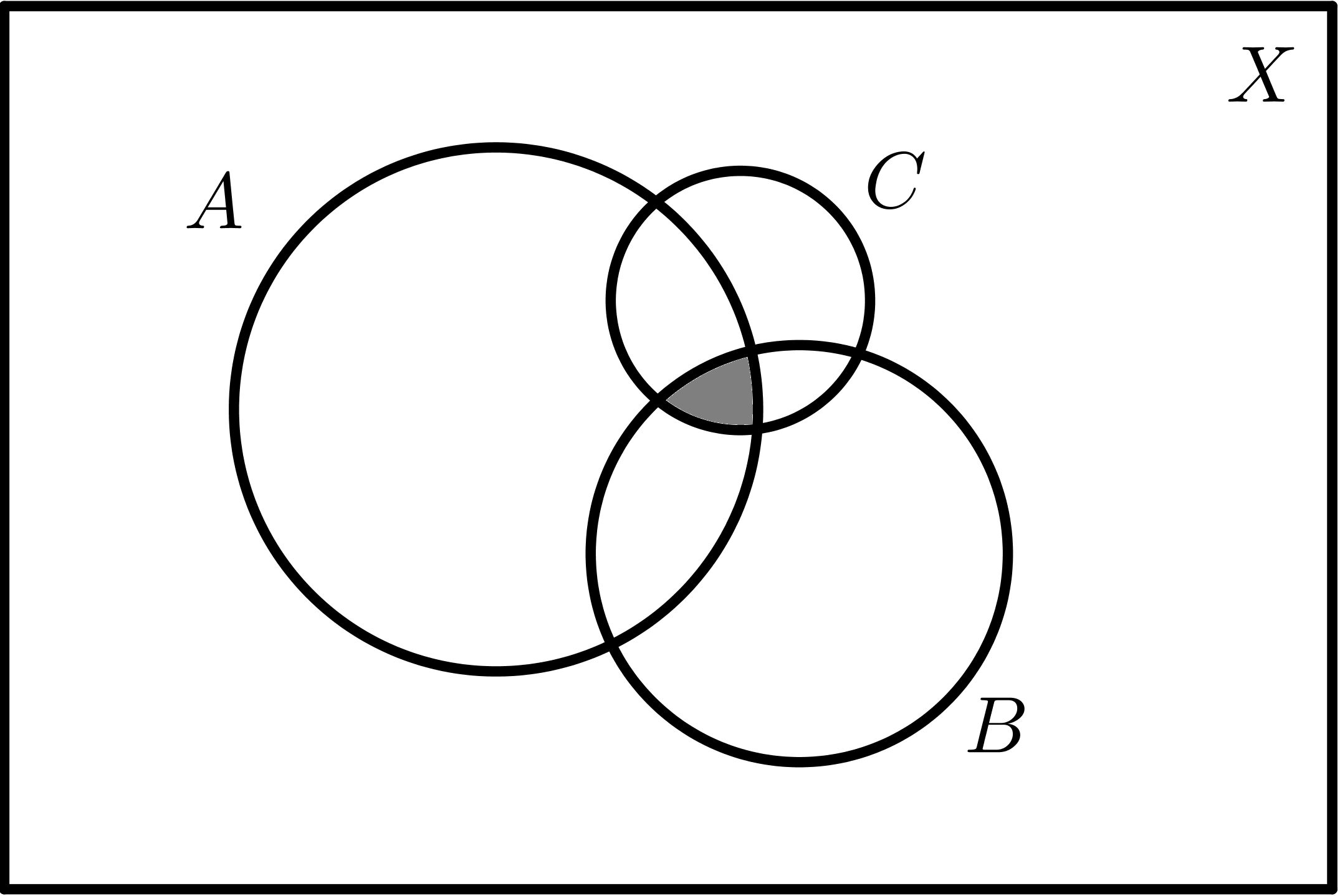 |
| $$A \cap B$$ |
$$A \cap C$$ |
$$B \cap C$$ |
$$A \cap B \cap C$$ |
Combinatoria
Números Combinatorios
$$\left\{\begin{array}{l}
\mathbf{\hbox{(Factorial de n) }} n! = n \cdot (n-1) \cdot (n-2) \cdots 2 \cdot 1 \hbox{ , } \forall n \in \mathbb{N}\\
\\
\mathbf{\hbox{(Propiedades)}} \left\{\begin{array}{l}
n! = n \cdot (n-1)! \\
\\
0! = 1 \\
\end{array}\right.\\
\\
\mathbf{\hbox{(Número combinatorio) }} \hbox{Dados n, m} \in \mathbb{N},n \geq m, \displaystyle{\binom{n}{m}} = \displaystyle{\frac{n!}{m!(n-m)!}} \\
\\
\mathbf{\hbox{(Propiedades)}} \left\{\begin{array}{l}
\displaystyle{\binom{n}{0}} = 1, \displaystyle{\binom{n}{1}} = n, \displaystyle{\binom{n}{n}} = 1 \\
\\
\displaystyle{\binom{n}{m}} = \displaystyle{\binom{n}{n-m}} \\
\\
\displaystyle{\binom{n}{m}} + \displaystyle{\binom{n}{m+1}} = \displaystyle{\binom{n+1}{m+1}} \\
\end{array}\right.\\
\end{array}\right.
$$
Triángulo de Tartaglia (o de Pascal)
$$
\left.\begin{array}{l}
\left.\begin{array}{l}
& & & & 1 & & & & \\
& & & 1 & & 1 & & & \\
& & 1 & & 2 & & 1 & & \\
& 1 & & 3 & & 3 & & 1 & \\
1 & & 4 & & 6 & & 4 & & 1\\
& & & & \vdots & & & & \\
\end{array}\right.
& \Leftrightarrow &
\left.\begin{array}{l}
& & & & \displaystyle{\binom{0}{0}} & & & & \\
& & & \displaystyle{\binom{1}{0}} & & \displaystyle{\binom{1}{1}} & & & \\
& & \displaystyle{\binom{2}{0}} & & \displaystyle{\binom{2}{1}} & & \displaystyle{\binom{2}{2}} & & \\
& \displaystyle{\binom{3}{0}} & & \displaystyle{\binom{3}{1}} & & \displaystyle{\binom{3}{2}} & & \displaystyle{\binom{3}{3}} & \\
\displaystyle{\binom{4}{0}} & & \displaystyle{\binom{4}{1}} & & \displaystyle{\binom{4}{2}} & & \displaystyle{\binom{4}{3}} & & \displaystyle{\binom{4}{4}}\\
& & & & \vdots & & & & \\
\end{array}\right.\\
\end{array}\right.
$$
Combinatoria: Variaciones, Combinaciones y Permutaciones
$$
\left\{\begin{array}{l}
\hbox{Importa el orden}
\left\{\begin{array}{l}
\hbox{No entran todos } \mathbf{\hbox{(Variaciones)}}
\left\{\begin{array}{l}
\hbox{Sin repetición: } V_{n,k}=\displaystyle{\frac{n!}{(n-k)!}}=n \cdot (n-1) \cdots (n-k+1)\\
\hbox{Con repetición: } VR_{n,k}=n^k
\end{array}\right.\\
\\
\hbox{Entran todos } \mathbf{\hbox{(Permutaciones)}}
\left\{\begin{array}{l}
\hbox{Sin repetición: } P_n=n! = n \cdot (n-1) \cdot (n-2) \cdots 2 \cdot 1\\
\hbox{Con repetición: } PR_n^{\alpha_1,\alpha_2,\cdots,\alpha_k}=\displaystyle{\frac{n!}{\alpha_1! \cdot \alpha_2!\cdots \alpha_k!}}
\end{array}\right.\\
\end{array}\right.\\
\\
\hbox{No importa el orden } \mathbf{\hbox{(Combinaciones)}}
\left\{\begin{array}{l}
\hbox{Sin repetición: } C_{n,k} = \displaystyle{\binom{n}{k}} = \displaystyle{\frac{n!}{(n-k)! \cdot k!}}\\
\hbox{Con repetición: } CR_{n,k} = C_{n+k-1,k} = \displaystyle{\binom{n+k-1}{k}} = \displaystyle{\frac{(n+k-1)!}{(n-1)! \cdot k!}}\\
\end{array}\right.\\
\end{array}\right.
$$
$$
\left.\begin{array}{l}
\mathbf{\hbox{ (Permutaciones circulares) }} PC_n=(n-1)!\\
\end{array}\right.
$$